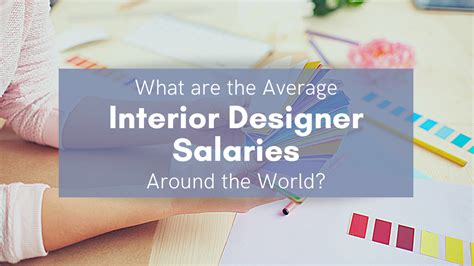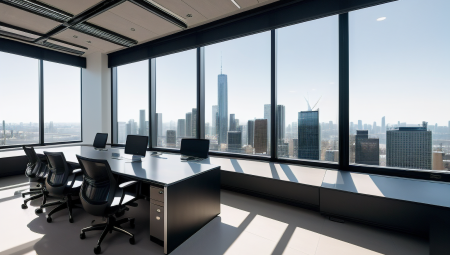Are you passionate about creating beautiful and functional spaces? Do you have a keen eye for design and a desire to turn your love for interior design into a rewarding career? If so, you may be wondering about the earning potential in the industry. In this blog post, we will explore the world of interior design salaries and the factors that determine how much you can earn in this exciting field. From the impact of education and experience to the role of specializations and location, we will dive into all the important aspects that can affect your earning potential as an interior designer. Whether you are considering residential or commercial design, or looking to negotiate your salary and benefits, we’ve got you covered. So, sit back, relax, and let’s take a closer look at the emerging trends and job opportunities in interior design salaries.
Table of Contents
Average salaries in the interior design industry
When considering a career in interior design, one of the factors that often comes to mind is the potential salary. The average salary in the interior design industry can vary depending on a number of different factors, including experience, location, and specialization. It’s important to have a clear understanding of these factors in order to set realistic salary expectations and to navigate the industry effectively.
Experience plays a significant role in determining an interior designer’s salary. Those with more years of experience in the industry generally command higher salaries, as they have developed a strong portfolio and a proven track record of successful projects. Additionally, specialized certifications and further education can also contribute to higher earning potential for interior designers. By investing in ongoing professional development, interior designers can demonstrate their expertise and increase their value in the industry.
Location is another important factor when considering average salaries in the interior design industry. Urban areas and regions with a high demand for interior design services often offer higher salaries, as the cost of living and competition for projects can influence earning potential. On the other hand, designers in rural areas or smaller markets may find that salaries are generally lower, but the cost of living may also be more affordable.
It’s important for interior designers to carefully consider their specialization within the industry, as different areas of focus can impact earning potential. Residential design and commercial design are two common specializations, each with its own set of pros and cons when it comes to average salaries. While residential design may offer a more flexible and personally rewarding work environment, commercial design projects often come with larger budgets and potentially higher fees, resulting in different salary expectations for each. Understanding the impact of specialization is crucial for interior designers to make informed decisions about their career path and earning potential.
Factors that determine salary in interior design
When it comes to determining salary in the interior design industry, there are several factors that come into play. One of the most important factors is the level of education and certifications that a designer has. Those with higher degrees and specialized certifications tend to earn more than those with just a basic qualification. Another key factor is the location of the job. Designers working in major cities or affluent areas often command higher salaries than those in smaller towns or less prosperous regions.
Experience is also a significant factor in determining salary. Interior designers with years of experience typically earn more than their less-experienced counterparts. Specializations within interior design also play a role in determining salary. Those specializing in high-end residential design or commercial spaces generally earn more than those focusing on more basic and straightforward projects.
Networking and building a strong client base can also impact a designer’s earning potential. Those who have cultivated strong relationships with repeat clients and industry partners often have a higher demand for their services, allowing them to command higher fees. Lastly, the current market conditions and emerging trends also play a role in determining salary. Designers working in niche markets or on cutting-edge projects may be able to charge higher rates than those in more saturated or traditional segments of the industry.
Considering these factors can provide valuable insight for both aspiring and established interior designers as they navigate their career paths and strive to maximize their earning potential within the industry.
Education and certifications for higher earning potential
When it comes to pursuing a career in interior design, education and certifications play a crucial role in determining your earning potential. Completing a degree in interior design from a reputable institution can open up various opportunities, and can significantly impact your starting salary. Additionally, obtaining certifications such as the National Council for Interior Design Qualification (NCIDQ) can demonstrate your proficiency and expertise in the field, making you a more desirable candidate for high-paying positions.
Furthermore, continuing education in the form of workshops, seminars, and specialized courses can also contribute to your earning potential as an interior designer. Staying updated on the latest design trends, materials, and technologies can set you apart from the competition and enable you to demand higher compensation for your expertise.
Investing in your education and obtaining relevant certifications not only increases your knowledge and skills but also shows your dedication to the profession. Employers are often willing to reward individuals who have taken the initiative to enhance their qualifications, which can lead to better job prospects and higher earning potential in the long run.
In conclusion, pursuing a strong education and obtaining valuable certifications are essential steps for interior designers looking to increase their earning potential. By continuously investing in your professional development, you can position yourself for greater success and advancement within the industry, ultimately leading to higher salaries and more lucrative career opportunities.
The impact of experience on interior design salaries
Experience plays a significant role in determining the salaries of interior designers. As professionals gain more experience in the field, they are typically able to command higher compensation for their expertise. This is because experienced designers have a track record of successful projects and a deeper understanding of the industry, allowing them to provide more value to clients.
Additionally, with experience comes an expanded professional network. This can lead to opportunities for larger, higher-profile projects, which often come with larger budgets and higher fees. As a result, interior designers with more experience are often able to secure more lucrative projects, ultimately leading to higher earnings.
Furthermore, experienced interior designers are often sought after for their expertise, which can result in increased demand for their services. As a result, they are in a better position to negotiate higher salaries and fees due to their proven track record and established reputation in the industry.
Overall, experience is a key factor in determining the salaries of interior designers, as it not only increases their market value, but also opens up opportunities for higher-paying projects and positions.
Specializations within interior design and their earning potential
When it comes to pursuing a career in interior design, there are various specializations that one can explore, each with its own earning potential. One such specialization is Residential Interior Design, which involves working on creating functional and aesthetically pleasing living spaces for individuals and families. This specialization often involves a more personal approach to design, as it requires understanding the unique needs and lifestyles of the clients. With the growing demand for personalized and stylish homes, residential interior designers have the potential to earn a competitive salary.
Another lucrative specialization is Commercial Interior Design, which focuses on creating functional and attractive work environments for businesses and organizations. This often involves working on larger scale projects such as office buildings, hotels, and retail spaces. Commercial interior designers have the opportunity to work with corporate clients and contribute to the design of impactful spaces, which can result in higher earning potential compared to residential design.
Green Design is another specialization that has been gaining popularity in recent years, as the focus on sustainability and environmental responsibility continues to grow. Interior designers specializing in green design often work on projects that involve eco-friendly materials, energy-efficient technology, and sustainable design principles. With the increasing demand for environmentally conscious design solutions, professionals in this field have the potential to command higher salaries.
Lastly, Healthcare Design is a specialization that caters to the unique needs of medical facilities and healthcare environments. This field involves designing spaces that prioritize patient comfort, safety, and functionality, while also adhering to industry-specific regulations and guidelines. Healthcare interior designers play a crucial role in creating healing environments, and as such, they have the potential to earn competitive salaries due to the specialized nature of their work.
Pros and cons of working in residential versus commercial design
When deciding on a career path in interior design, one of the key decisions to make is whether to specialize in residential design or commercial design. Each option comes with its own set of advantages and disadvantages that should be carefully considered before making a choice.
One of the main advantages of working in residential design is the opportunity to work closely with individual clients and create personalized spaces that truly reflect their personalities and lifestyles. This can be incredibly rewarding from a creative standpoint, as it allows for a high level of customization and attention to detail.
On the other hand, working in commercial design offers the potential for larger-scale projects and the opportunity to collaborate with architects, engineers, and other professionals. This can provide a more structured and organized work environment, as well as the chance to work on projects that have a significant impact on the local community.
However, both residential and commercial design come with their own unique challenges. Residential design often requires a high level of client interaction and the ability to manage individual preferences and budgets, while commercial design may involve navigating complex building codes and regulations, as well as meeting the needs and expectations of multiple stakeholders.
How location affects interior design salaries
One of the key factors that can greatly influence the salaries of interior designers is the location in which they work. The cost of living, demand for interior design services, and local economy all play a significant role in determining the earning potential of professionals in this field. For example, interior designers working in major urban centers such as New York City or Los Angeles tend to command higher salaries compared to those working in smaller towns or rural areas. This is largely due to the higher cost of living and the greater demand for design services in these urban hubs.
Furthermore, certain locations may have a greater concentration of high-paying clients who are willing to invest more in their interior design projects. This means that interior designers in these areas may have access to a larger pool of clients who are willing to spend more on their services, thereby increasing their earning potential. On the other hand, interior designers in less affluent areas may need to adapt their pricing and service offerings to accommodate the financial constraints of their local clientele.
It’s also important to consider the regional differences in the interior design industry. For instance, certain regions may have a stronger demand for residential design services, while others may be more focused on commercial projects. This can impact the earning potential of interior designers, as the rates and fees for residential and commercial design projects can vary significantly. Additionally, the local competition within the interior design market can also influence salaries, as a greater number of designers vying for the same projects in a particular area may drive down prices and limit earning potential.
In conclusion, the impact of location on interior design salaries cannot be overstated. Whether it’s the cost of living, demand for services, concentration of high-paying clients, regional industry differences, or local competition, where an interior designer chooses to work can have a significant effect on their earning potential.
The role of networking in advancing your interior design career
Networking plays a crucial role in advancing your career in the interior design industry. Building and maintaining strong professional connections can open doors to new opportunities, help you stay updated on the latest trends, and enhance your industry knowledge.
Attending industry events, workshops, and seminars can provide valuable networking opportunities. Meeting with fellow professionals, potential clients, and industry leaders can help you establish meaningful connections and expand your professional circle.
Utilizing online platforms such as LinkedIn can also be a powerful tool for networking in the interior design industry. By engaging in industry-related discussions, sharing your work, and connecting with other professionals, you can increase your visibility within the industry and potentially attract new career opportunities.
Furthermore, networking can also provide valuable mentorship and guidance from experienced professionals in the field. By building strong relationships with mentors, you can gain valuable insights, advice, and support that can help you navigate your career path and make informed decisions.
Negotiating salary and benefits as an interior designer
When it comes to securing a job as an interior designer, negotiating your salary and benefits is an important aspect of the process. Interior designers are responsible for creating functional and aesthetically pleasing spaces for clients, and their compensation should reflect their skills and expertise. It is crucial for interior designers to understand the factors that influence their salaries and benefits, and to be prepared to negotiate for fair and competitive compensation.
One of the key factors that determines an interior designer’s salary is their level of experience. Designers with several years of experience and a proven track record of successful projects are typically able to command higher salaries than those who are just starting out in the industry. Additionally, specialized skills and certifications can also increase earning potential, as they demonstrate a designer’s expertise in a particular area, such as sustainable design or healthcare design.
Location is another important factor that can impact an interior designer’s salary and benefits. Designers working in major metropolitan areas or affluent communities may be able to command higher salaries due to the increased demand for their services and the higher cost of living in these areas. On the other hand, designers in smaller or less affluent areas may need to be more flexible in their salary expectations in order to secure employment.
When negotiating salary and benefits as an interior designer, it is important to research industry standards and to be prepared to advocate for fair compensation. Joining professional organizations and networking with other designers can provide valuable information and support during the negotiation process. Additionally, seeking the guidance of a mentor or experienced colleague can help designers navigate the complexities of negotiation and ensure that they are being fairly compensated for their skills and expertise.
Emerging trends in interior design salaries and job opportunities
As the interior design industry continues to evolve, new trends are emerging that are impacting both salaries and job opportunities for professionals in this field. One of the most significant trends is the increasing demand for sustainable design, which is leading to new job opportunities for interior designers who specialize in environmentally friendly practices. This trend is also driving higher salaries for professionals with expertise in sustainable design, as businesses and individuals are willing to pay a premium for environmentally conscious designs.
Another emerging trend in interior design is the demand for wellness-focused spaces. With an increased emphasis on health and well-being in both residential and commercial settings, interior designers who can create spaces that promote wellness are in high demand. This trend is creating new job opportunities in sectors such as healthcare and hospitality, as well as driving up salaries for designers who specialize in this area.
Technology is also playing a significant role in shaping the future of interior design salaries and job opportunities. As virtual reality and augmented reality become more integrated into the design process, professionals with expertise in these technologies are seeing increased demand for their skills. This trend is leading to new job opportunities in areas such as virtual staging and interactive design, as well as higher salaries for designers who can leverage these technologies to enhance their work.
Finally, the growing emphasis on customizable and personalized design is creating new job opportunities and driving up salaries for interior designers who can offer unique and tailored solutions to their clients. As consumers seek one-of-a-kind designs that reflect their individual aesthetic and lifestyle preferences, there is a growing demand for designers who can deliver personalized experiences. This trend is leading to new opportunities in areas such as luxury residential design and high-end hospitality, as well as driving up salaries for designers who can meet this demand.





